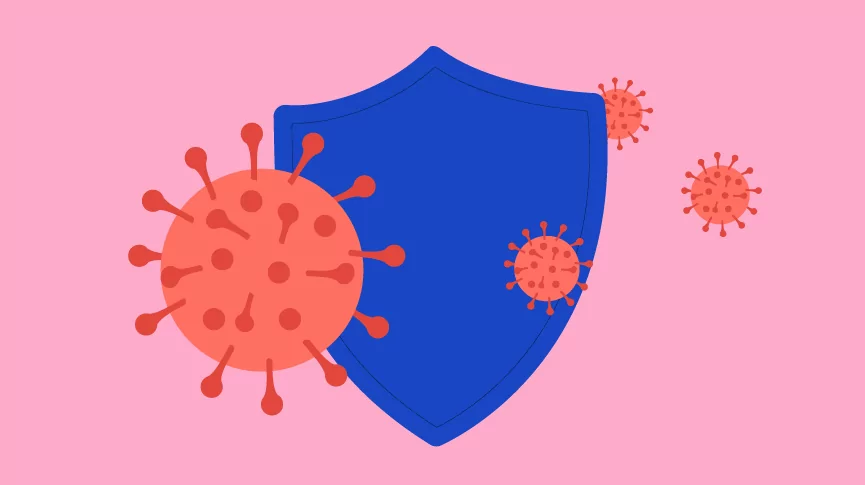Emergency HIV Prevention

In the 1980s the AIDS epidemic swept through communities, taking lives, and breaking hearts. The LGBTQ+ communities were hit especially hard thanks in part to how HIV is transmitted and the varying levels of access to care that people had. Although it can still be incredibly scary and life-changing, an HIV diagnosis is no longer a death sentence. For people that live in areas that have access to proper health care, HIV can be managed so that people can go on living their lives. That being said, no one wants to get HIV.
Luckily, there are more and more ways to prevent its transmission – one of them being emergency HIV treatment. Before we get into what that looks like, you have to understand the basics of HIV and AIDS.
What is HIV?
Human immunodeficiency virus, more commonly known as HIV, attacks a person’s immune cells, making it difficult for them to fight infections and diseases. HIV is spread through blood, semen, and vaginal fluids, however, it isn’t spread through saliva. The virus is most commonly transmitted through vaginal and anal sex, as well as through sharing drug injection equipment. Although there are treatments available that allow people to live relatively long and healthy lives with HIV, there is not yet a cure. This means if you have it, you have it for life.
If HIV is left untreated, over time it can turn into AIDS, acquired immunodeficiency syndrome.
What is AIDS?
AIDS is a disease that can develop from the virus HIV. Essentially, it’s HIV in its last stages. This happens when the virus badly damages the body’s immune system, making it difficult for it to fight off even mild illnesses and infections. Once HIV develops into AIDS, it can still be treated, but without treatment, life expectancy falls to about one year. Like we said before, there are so more and more options these days for not only HIV treatment, but prevention.
These life-saving medical advances have led to a thirty percent decline in new HIV infections globally since 2010. Let’s take a look at what that might look like in an ’emergency situation.’
Emergency Transmission Prevention: PEP
Life happens, and sometimes we’re left in a situation where we have to adapt and use what we’ve got. Especially when it comes to preventing the transmission of life-altering sexually transmitted infections like HIV. If you believe you may have been exposed to HIV, it’s important to seek emergency preventative care.
The medication used for this is called PEP (post-exposure prophylaxis). In an emergency, PEP must be started within 72 hours of possible exposure to HIV, however, it works best when started 24 hours after exposure. After that, you take the medication daily for twenty-eight days.
PEP works by using a combination of three drugs that prevent HIV from making copies of itself and spreading through the body. When taking PEP, it’s imperative that you take it correctly and consistently for the full four-week course, and prevent exposure to HIV again while taking it. You’ll also want to use condoms with sexual partners, and avoid sharing needles, syringes, and other drug equipment. Although PEP isn’t 100% effective when used correctly and on time, it typically lowers someone’s chance of getting HIV by more than 80%.
Where Do You Get PEP?
If you’re wondering where to get PEP, we’re here to help.
There are plenty of places where PEP can be obtained, here are a few:
- Emergency room doctor
- Urgent care provider
- Healthcare provider
- Reproductive health care clinic
Are There Any Side Effects?
Some people who take PEP may experience mild side effects and a general feeling of unwellness. The most common side effects include stomach issues like nausea and vomiting, stomachache, and diarrhea. Other possible side effects include insomnia, tiredness, and headache.
Who Should Use PEP?
While anyone who has sex can potentially get HIV, it’s not that common, and certain risk factors increase someone’s susceptibility to the virus.
If you fall into any of these categories, you should have HIV prevention on your mind:
- Having another STI, like gonorrhea, can make it easier for the HIV virus to get through due to the lining of internal organs being weakened.
- Don’t use condoms, or don’t use them consistently.
- You use injectable drugs and share equipment with other people.
- You have a sexual partner whose HIV status is positive or unknown.
- You have unprotected anal sex. HIV is easier to transmit during anal sex because of the sensitive nature of the tissue.
- You have been sexually assaulted.
- You used a condom but it broke.
- Possible workplace exposure to HIV, specifically if you work in healthcare.
Other Options for Protection
If you are regularly exposed to HIV, PEP is probably not the best option for you. It’s meant only for emergencies, and shouldn’t be taken long term. Luckily there are other great options for more long-term use when it comes to HIV prevention, thanks to a medication called PrEP, pre-exposure prophylaxis. While they aren’t 100% effective, condoms can reduce the risk of HIV transmission by about 90 to 95%. Although it’s not out yet, researchers are working on a promising HIV vaccine, which will change the face of reproductive healthcare.
When it comes to sex, another important factor is regular testing and discussing testing with your sexual partners. Be sure to ask your healthcare provider to test for HIV. Also, know that it’s totally ok to ask your sexual partner to see their testing results and if they are HIV positive – their viral load count.

Natasha (she/her) is a full-spectrum doula and health+wellness copywriter. Her work focuses on deconstructing the shame, stigma, and barriers people carry around birth, sex, health, and beyond, to help people navigate through their lives with more education and empowerment. You can connect with Natasha on IG @natasha.s.weiss.


